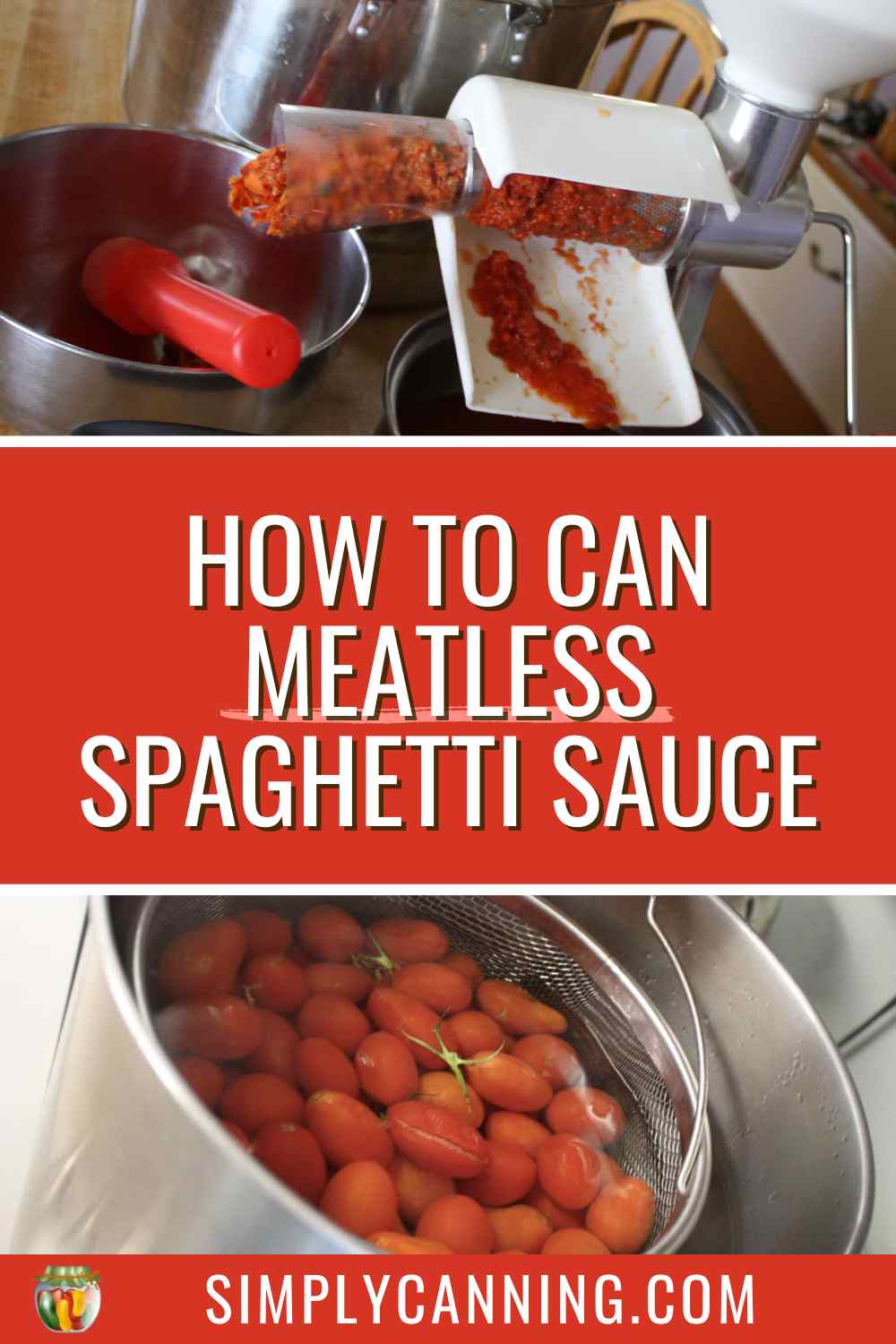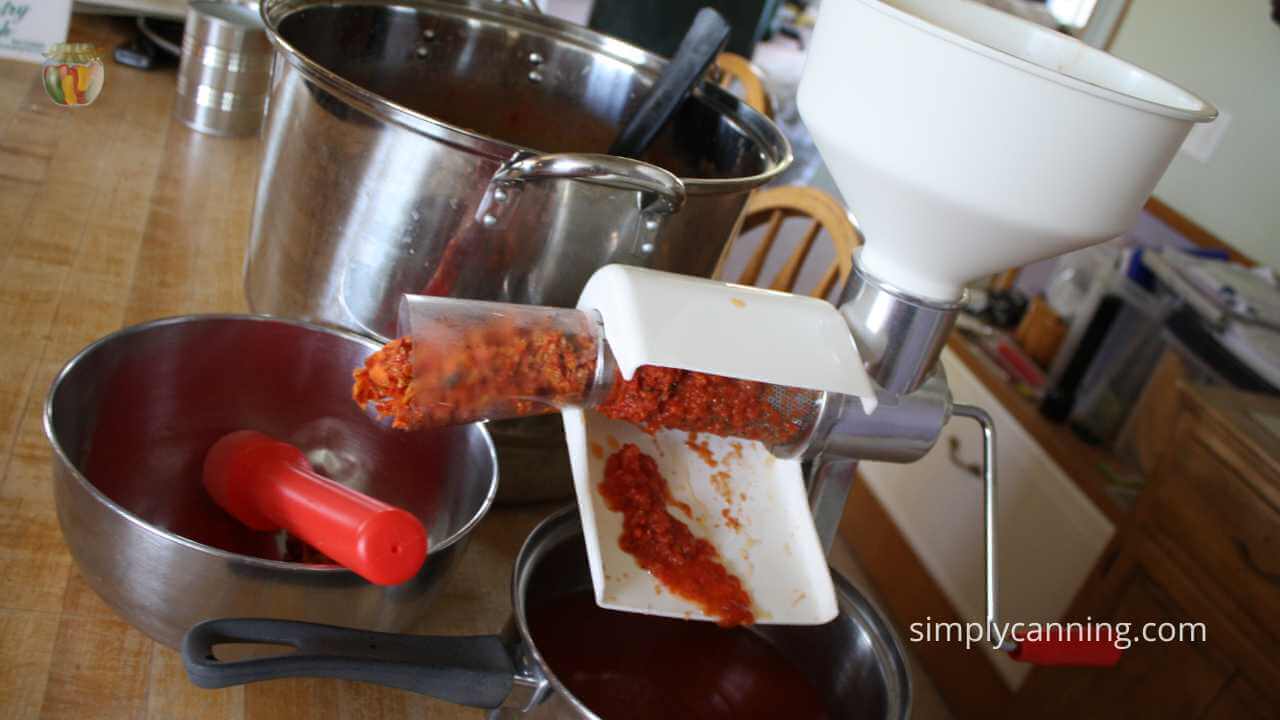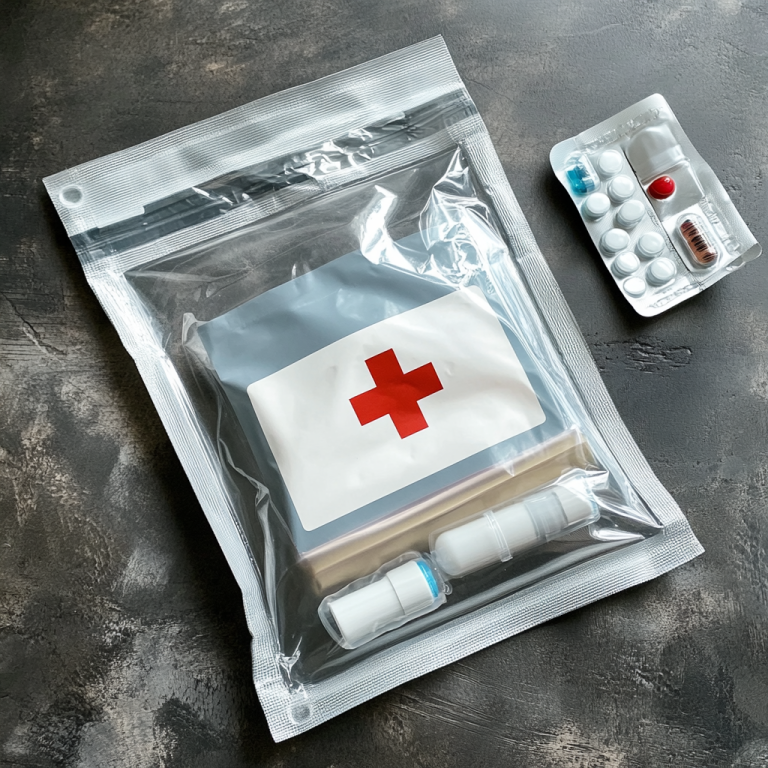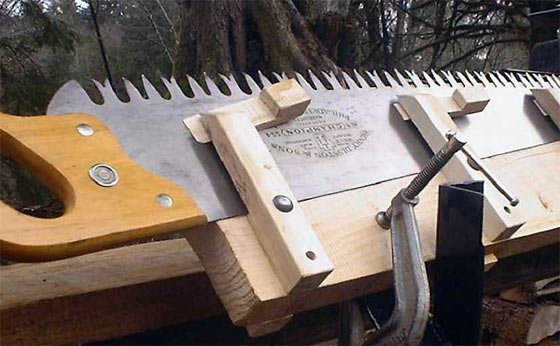Canning this version of homemade spaghetti sauce without meat is great for later use in many recipes. It is sometimes called a marinara sauce and can be a versatile ingredient. Use it for more than pasta. It’s easy enough to simply brown your meat later and add it when you open the jar. Or just use it as it is without meat.
Prepare your tomato sauce and mix in recommended amounts of peppers and onions. Get creative with dried seasonings, use hot peppers for a spicier kick, or keep it mild with your preferred spices. Process the sauce in a pressure canner. Once done, you’ll have a jar of delicious, homemade sauce ready to serve with the pasta of your choice.
Quantity
This recipe yields approximately 7 quart jars of spaghetti sauce. It includes directions for quarts or pints. You can safely halve or double the recipe if you want more or less in quantity. Just adjust all fresh ingredients so the ratio remains the same. If you only use half the tomatoes, use half the vegetables as well. It’s the ratio that keeps it safe for storage on the shelf.
Know your Canner
Before diving into this project, if you’re new to using a pressure canner, I highly recommend giving “How to Use a Pressure Canner” a read. It will introduce you to the workings of a pressure canner and guide you through the setup process for any canning project.
This recipe may not be canned in a water bath canner.
Extended Directions and Expert Tips
This section has extended directions and tips. There is a printable short version at the bottom of the page.
Ingredients Needed
- 30 pounds tomatoes – The tomatoes are measured before peeling and seeding. Any tomato variety works but a paste type tomato will be less juice and will make a nicer thick sauce.
- 1 cup chopped onion – any variety
- 5 cloves garlic, minced or pressed – I like to use fresh garlic and press it with my garlic press, but dried minced can be substituted.
- 1 cup celery or green peppers chopped – this is one cup total.
- 4 1/2 tsp canning salt
- 2 Tablespoons dried oregano
- 2 Tablespoons dried parsley
- 2 Tablespoons dried basil
- 2 dried bay leaves
- 1/4 – 1/2 cup brown sugar, optional – this cuts the acidity of the tomatoes. I use the smaller amount but you can skip it altogether if you don’t want it.
- 1-2 Tablespoons oil
Look for more recipe adaptations and ingredient adjustments below.
Canning Equipment and Supplies Needed
- Pressure Canner – yes you really do need a pressure canner for this recipe.
- Stock Pot – You’ll need a large stock pot to mix up your tomatoes and vegetables. If you cut the recipe down you can just use a pot that will acomodate the quantity you make.
- Blancher – or strainer to blanch and peel tomatoes
- Food Mill – I’ve got several options outlined below.
- Canning Jars
- Canning Lids and Rings
- Funnel, Jar Lifter, Bubble Tool
- Ladle
- Garlic Press – optional, but very handy.
How to Prepare Tomatoes for Sauce
The first step is to remove the skins and seeds from your fresh tomatoes. There are a couple of ways to do this. I’ll go over each method, but just know the goal is to remove the skins and seeds and have a tomato sauce that is ready to add ingredients to make your spaghetti sauce.
Remove skins & seeds.
A food mill is an easy way to remove both skins and seeds. You’ll heat the tomatoes to soften them. Then run them through to prepare them for sauce.
- Wash tomatoes.
- Remove stems and any or bad spots. Slice tomatoes in half.
- Simmer the tomatoes to soften. Use a potato masher to crush the tomatoes to start juices flowing.
- Cool slightly (so you don’t burn yourself!) and run tomatoes through a food mill to remove all skins and seeds.
There are a couple styles of mills you can use. (These all open in amazon)
Freezing tomatoes for easy peeling later.
Another option is freezing your tomatoes. This is especially good if you just don’t have time now, or if you are getting a few tomatoes each day and want to save them for canning later all at one time. Just rinse them off and put in freezer bags. Pop in the freezer.
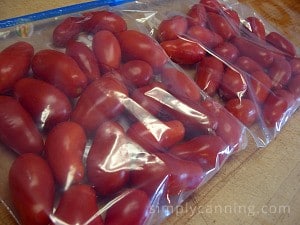
Take the tomatoes out at a later date and thaw. As the tomatoes thaw, the skins will slip right off just like if you blanched them.
Then when they are completely thawed you can run them through a food mill to remove the seeds. They will be soft without the heating step. I’ve got more on freezing tomatoes easily to thaw them later for peeling.
Blanching Tomatoes to remove the skins.
Blanching simply means to dip your tomatoes in boiling water. This loosens the skins and enable you to just ‘slip’ the skins off right in your hands. I’ve got more on how to blanch for food preservation here with some other options and details.
- Wash tomatoes.
- Remove stems and bruises.
- Bring a large pot of water to a boil.
- Dip whole tomatoes in the boiling water for approximately 1 minute or until skins split.
- Remove tomatoes to cold water to cool immediately.
- Use your hands to slid the skins off.
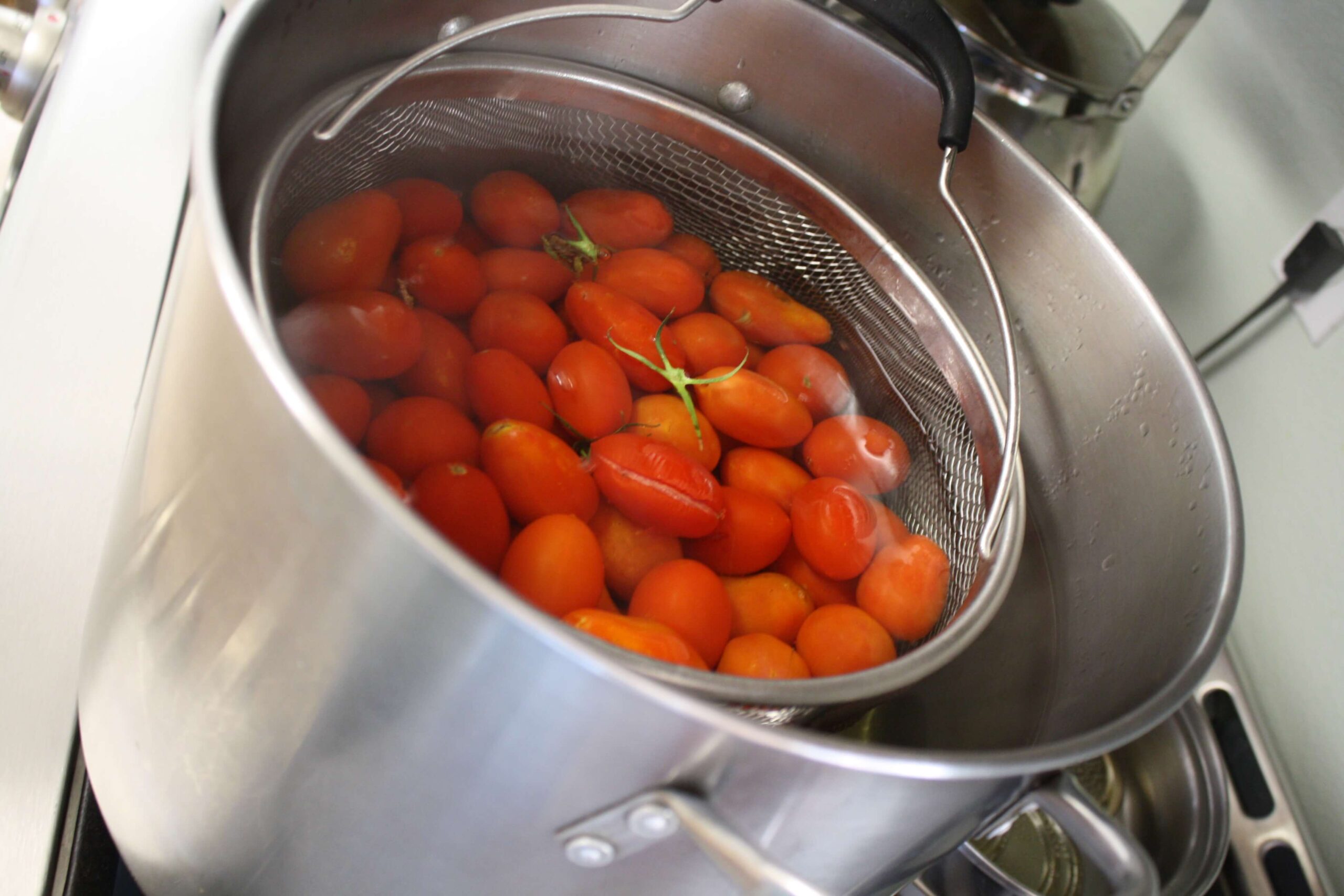
A Safe Canning Notice and disclaimer – This blanching method only removes the skins. Tested instructions for spaghetti sauce always recommend removing both skins and seeds.
- It is a safety issue for skins, so please always remove the skins.
- I believe this is just a quality issue for seeds. But this is my opinion. I can find no documentation of the affects of leaving the seeds. If this will bother you, blanching is not the method for you. Please use a food mill instead.
- And if you know of documentation on this… let me know in the comments below!
Making your Homemade Spaghetti Sauce.
So now you’ve washed your tomatoes, removed skins and seeds, and placed the resulting tomatoes in a large stock pot. You are ready to make your homemade spaghetti sauce.
Simmer tomato sauce until thickened (20 minutes to 1 hour), stirring often. Just place your prepared tomatoes in a large pot big enough to hold all ingredients. Don’t add the vegetables yet. Bring just the tomato sauce to a low boil and then reduce the heat to just a simmer. This will reduce and thicken your tomato sauce. You can reduce it by up to half.
Another option if you’ve got the time is to use a slow cooker to reduce your sauce. Put your sauce in the slow cooker on high. Leave the lid ajar so moisture can escape and when it is reduced you can switch back to the stock pot to finish up. This works well if you are making a small batch, but a full batch would probably not fit into one slow cooker.
Brown the chopped onion and vegetables and minced garlic. Sauté until lightly cooked and tender. Use a small amount of oil if needed to prevent sticking but less is better. 1-2 T is suggested… less is better than more. I prefer olive oil but oil of your choice is fine.
Add cooked vegetables and seasonings to sauce and bring back to a boil.
Canning your Homemade Spaghetti Sauce
The sauce is now ready for the jars. You should have your canner and jars hot but not boiling.
Using a ladle, fill hot jar with spaghetti sauce leaving 1” headspace.
Watch for bay leaves if you’ve used them. They will get very strong if they end up in a jar. Simply remove them as you work.
Remove bubbles. Using a bubble tool or any other plastic utensil, slip it down in the jar around the edges. This moves things around and releases any trapped air bubbles. This is pretty saucy so you may not have much but this will ensure you don’t. Check your headspace again when you are done just to be sure it didn’t change.
Wipe the rim clean. This is an important step, because if you’ve got sauce or a piece of onion or something on the jar rim, it may interfere with the seal to the lid. A simple wipe with a damp paper towel or lint free kitchen cloth is fine.
Place seal and ring. Place the flat lid on the jar and add a screw band to hold it during processing. The lids should be snug but not over tight. Finger tight is the term most often used.
Place the jar in the warm canner. Remember the canner will be hot but not boiling yet. The goal is to have everything fairly evenly hot. If you’ve got cold water in your canner and put a hot jar of sauce, the jar might break. Canning jars are sturdy, but they are still glass.
Proceed to fill all jars. Place each jar in the canner as it is filled.
Process in a pressure canner, according to the pressure canning directions in the recipe card below.
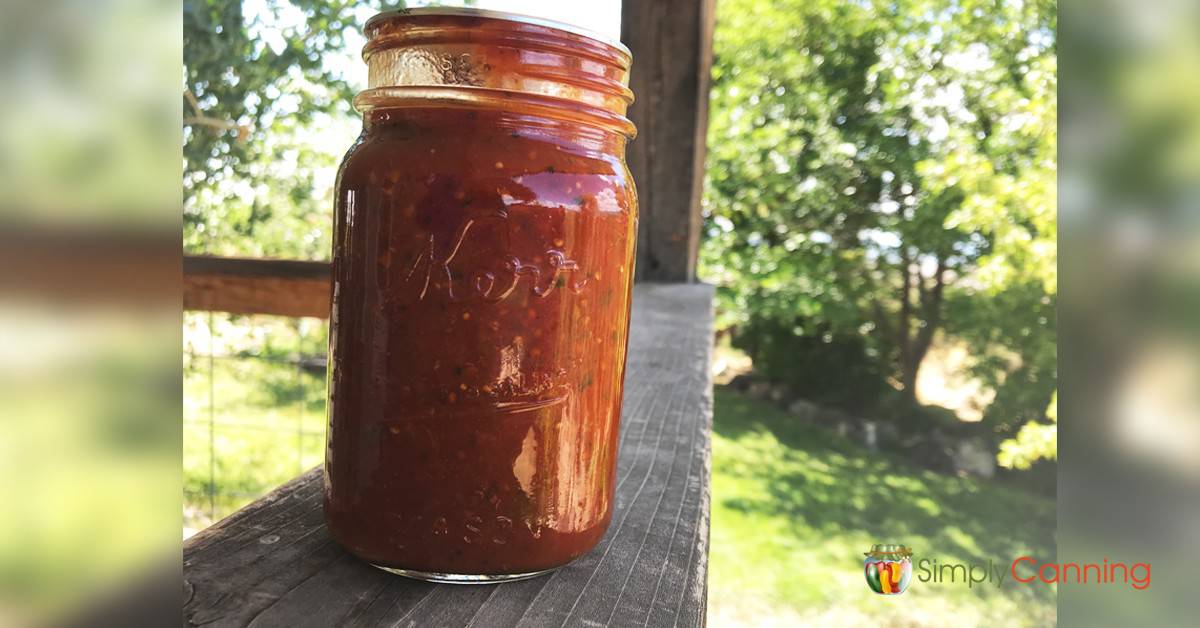
Adaptations
The addition of vegetables affects the safety and shelf stability of this sauce. So do not completely wing it and make up your own recipe for canning purposes. I’ve got some adaptations that you can make to create a recipe as close to your family recipe as safely possible.
Remember canning is a science not an art. I don’t recommend just winging it with a recipe like this one.
You can leave out a low acid ingredient if you wish. For example if you don’t like peppers in your sauce, just leave them out. Or if you want a little spice, use hot peppers instead of mild bell peppers. But don’t add more peppers or onions or any other vegetable.
Another way you can adapt this is to adjust the dried seasonings. This is where you can try to match a favorite recipe that you might have. Don’t like oregano? Leave it out. Love basil? Add more! Want to use more salt and pepper? Go for it. You can add a bit of hot pepper flakes for some more heat too.
Check the FAQ below for information on dried vs fresh herbs.
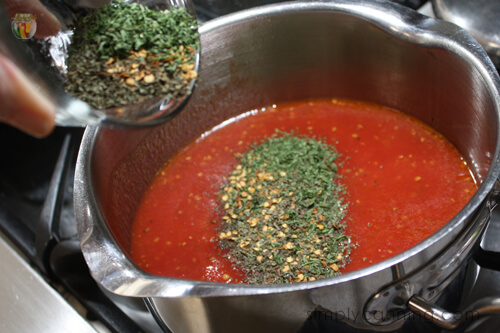
Frequently Asked Questions
This may seem crazy but… Fresh herbs do not have a role here. If a tested recipe includes fresh herbs that is great. But if the recipe calls for dried, use dried. This recipe calls for dried.
You can add bit of cornstarch when you open the jar, it thickens it and gives it a similar texture to commercial products. Adding tomato paste or tomato powder works as well. All this is added after you open the jar to serve it.
If you want to can this sauce with meat it is a different process. I’ve got a recipe here for spaghetti sauce with meat. It is practically the same, but meat is added and the processing time is different.
Pressure Canned only. Because it includes vegetables it is a low acid food and the water bath is not sufficient. If you don’t have a pressure canner you can just can plain tomatoes in a water bath. Then add your vegetables and seasonings when you open the jar to make your sauce.
Canning Recipe Card
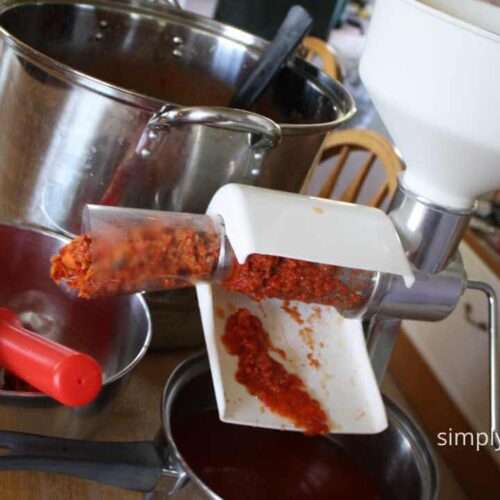
How to Can Spaghetti Sauce without Meat
This meatless version of homemade spaghetti sauce can be canned for later use in many recipes. Leaving out the meat gives many more options for use, simply brown your meat later add to this sauce and you are ready for the dinner table.
Ingredients
- 30 pounds tomatoes
- 1 cup chopped onion
- 5 cloves garlic minced or pressed
- 1 cup celery or green peppers chopped
- 4 ½ tsp canning salt – 4 1/2 teaspoons
- 2 Tablespoons dried oregano
- 2 Tablespoons dried parsley
- 2 Tablespoons dried basil
- 2 dried bay leaves
- ¼ – ½ cup brown sugar optional
- 1-2 Tablespoons oil
Instructions
Removing Skins and Seeds from Fresh Tomatoes: 3 options.
Blanching Tomatoes: removes skins only.
-
Wash tomatoes and remove stems and bruises.
-
Blanch tomatoes by bringing water to a boil in a large stock pot or blancher. Dip the tomatoes until skins split or 1 minute.
-
Remove tomatoes to cold water. When they are cool enough to handle slip the skins off with your hands. They should slip off easily. Add peeled tomatoes to another pot until all tomatoes are peeled.
Food Mill: removes skins and seeds.
-
Wash tomatoes and remove stems and bruises, slicing tomatoes in half.
-
Simmer tomatoes to soften in a large stock pot, crushing the tomatoes to start the juices flowing.
-
Cool slightly and run tomatoes through a food mill to remove all skins and seeds.
Freezing: removes skins only.
-
Freeze tomatoes whole in a freezer bag.
-
Defrost tomatoes. As they thaw, the skins will slip off like blanched tomatoes.
Making Homemade Spaghetti Sauce:
-
Simmer tomato sauce until thickened (20 minutes to 1 hour), stirring often.
-
Sauté onion and vegetables and garlic in oil until tender.
-
Add vegetables to sauce.
-
Stir in dried seasonings and bring back to a boil.
-
Fill hot jar with spaghetti sauce, leaving 1? headspace.
-
Remove bay leaves, remove bubbles, wipe the rim clean, and place seal and ring.
-
Place the jar in the warm canner and repeat the process for all jars.
-
Process according to the directions below.
Packing the Jars
-
As you are filling jars, remove bay leaves.
-
Fill hot jar with spaghetti sauce, leaving 1? headspace.
-
Remove air bubbles and check your headspace again. Adjust if needed.
-
Wipe rims of jar clean with damp towel or paper towel.
-
Add your canning lids and rings, finger tight.
-
Place jar in the hot (not boiling) canner. When all jars are filled, process according to the processing instruction and time chart in the notes area below.
Processing with a Pressure Canner
-
Put the lid on the canner leaving the weights off. Bring to a boil. Watch for steam to start coming out the vent pipe in the lid.
-
Allow the steam to ‘vent’ for 10 minutes then put the weights on. Use the proper weight for your altitude (check the chart below) This is when pressure will start to build.
-
When the pressure reaches your requirements, start your time. Process for the full time indicated, adjusting the heat as needed to maintain the correct pressure for the entire time.
-
When processing time is completed turn off the heat. Do not remove weights yet. Let the canner sit undisturbed until pressure comes back to zero. Do not try to speed up the cooling process.
Cool Down Time
-
Remove the weight and wait 5 minutes.
-
Open the lid to allow steam to escape. (carefully! Don’t let it hit your face or arms.) Leave the lid setting on top of the canner slightly ajar and wait 5 minutes again.
-
Take the lid off the canner and remove your jars. (optionally you can wait another 5 minutes if the contents appear to be bubbling so hard it is coming out of the jars)
-
Put the jars a few inches apart on a thick towel and allow them to cool to room temperature undisturbed. 12 hours is suggested.
-
When the jars are cool, remove the metal bands, check the seals, wash jars, dry completely, and store in a cool dark place.
Notes
Pressure canning instruction. Pay attention to the proper time for the proper equipment.
Processing Time in a Pressure Canner
Pints are processed for 20 minutes
Quarts are processed for 25 minutes.
- Step one – use the chart for the style of pressure canner you are using.
- Step two – check the altitude adjustments for your altitude.
Dial Gauge – Watch the dial on your canner to determine pressure.
Altitude Weight (pounds pressure)
0-2000 11 lbs
2001-4,000 12 lbs
4,001-6,000 13 lbs
6,001-8,000 14lbs
Weighted Gauge – Watch for the weight to ‘jiggle’ to determine pressure.
Altitude Weight (pounds pressure)
0-1000 ft 10 lbs
Above 1000 15 pounds
Adapted from recipe source- National Center for Home Food Preservation accessed July 18,2023.
Pin This For Later!
